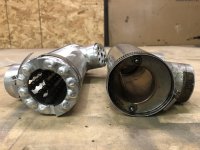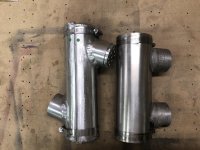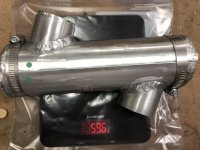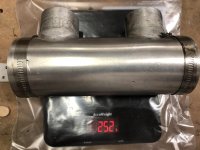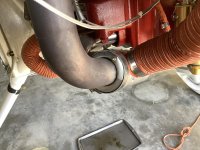I discovered a problem with one of the heat muffs on my -14A today. Actually, the heat muff was only part of the problem, which also involved the exhaust system. As a data point, the airplane has 700 hours on it.
I thought that both muffs fit tightly enough on the exhaust pipe when I installed them. They are held in place by bendable tabs. Today I noticed that the tabs on the inside diameter of one of the end plates on a muff had worn off. The resulting sharp edge had cut a groove into the exhaust pipe around a portion of its circumference.
I did not measure the depth of the cut but it is very definitely noticeable. I just ordered replacement end plates for both muffs and will pull the assembly apart tomorrow to have a better look at it. There may be damage to the exhaust pipe under the other three end plates but I only noticed this one in the limited time I had.
This is an area you may want to pay attention to as it is not very noticeable and could create some exhaust pipe damage before you see it. And clearly, an exhaust pipe leak into a heater muff is not a good situation.
I don't now how tightly the end plates are supposed to grasp the exhaust pipe, but certainly I intend to bend the tabs sufficiently to tighten up that joint when I install the new parts. It would be be an improvement if the end plates were designed such that they could be attached rigidly to the exhaust pipe with a hose clamp instead of via a friction fit based on how you bend the tabs.
I thought that both muffs fit tightly enough on the exhaust pipe when I installed them. They are held in place by bendable tabs. Today I noticed that the tabs on the inside diameter of one of the end plates on a muff had worn off. The resulting sharp edge had cut a groove into the exhaust pipe around a portion of its circumference.
I did not measure the depth of the cut but it is very definitely noticeable. I just ordered replacement end plates for both muffs and will pull the assembly apart tomorrow to have a better look at it. There may be damage to the exhaust pipe under the other three end plates but I only noticed this one in the limited time I had.
This is an area you may want to pay attention to as it is not very noticeable and could create some exhaust pipe damage before you see it. And clearly, an exhaust pipe leak into a heater muff is not a good situation.
I don't now how tightly the end plates are supposed to grasp the exhaust pipe, but certainly I intend to bend the tabs sufficiently to tighten up that joint when I install the new parts. It would be be an improvement if the end plates were designed such that they could be attached rigidly to the exhaust pipe with a hose clamp instead of via a friction fit based on how you bend the tabs.











